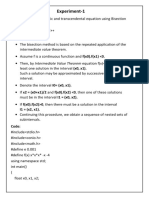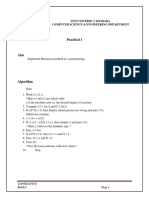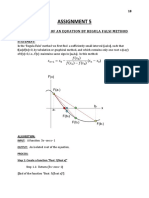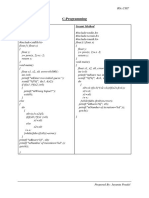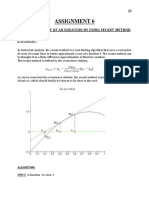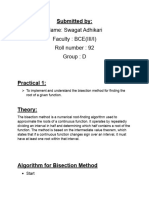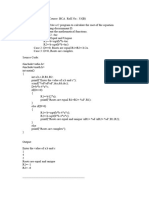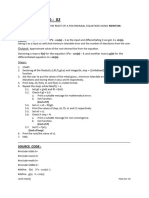0% found this document useful (0 votes)
6 views3 pagesFunctional Analysis
The document provides a C program that implements the Newton Bisection method to find the real root of the function f(x) = x log(x) - 1. The program prompts the user for two initial guesses and a tolerable error, then iteratively narrows down the interval to find the root. It outputs the steps taken and the final root value once the error tolerance is met.
Uploaded by
shad09141Copyright
© © All Rights Reserved
We take content rights seriously. If you suspect this is your content, claim it here.
Available Formats
Download as DOCX, PDF, TXT or read online on Scribd
0% found this document useful (0 votes)
6 views3 pagesFunctional Analysis
The document provides a C program that implements the Newton Bisection method to find the real root of the function f(x) = x log(x) - 1. The program prompts the user for two initial guesses and a tolerable error, then iteratively narrows down the interval to find the root. It outputs the steps taken and the final root value once the error tolerance is met.
Uploaded by
shad09141Copyright
© © All Rights Reserved
We take content rights seriously. If you suspect this is your content, claim it here.
Available Formats
Download as DOCX, PDF, TXT or read online on Scribd
/ 3






